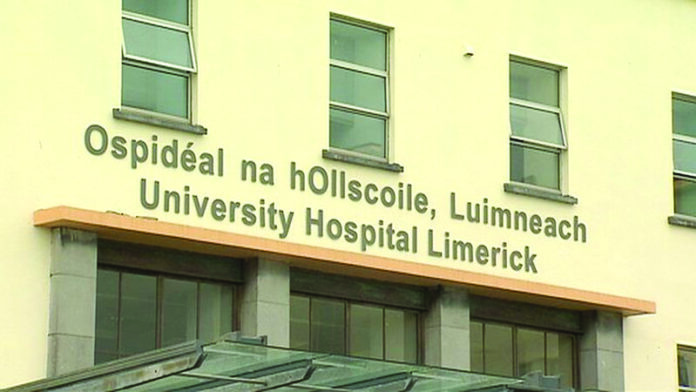
THE Health Service Executive has issued a statement asking that persons commenting on “recent incidents and deaths” of patients at the University Hospital Limerick (UHL) do “not jump to conclusions” as to the nature and outcome of individual cases.
The health body urged that those commenting on such deaths “respect the dignity of those who have died” and “the privacy of their grieving families”, adding that it is “concerned that some current commentary in relation to tragic outcomes at University Hospital Limerick is putting forward inappropriate conclusions about some of these cases”.
The HSE suggested that “not every tragic outcome for a family in Limerick means there has been a failure in the service”.
The HSE statement came in the wake of publicity surrounding the recent deaths at UHL of a patient in her 30s at UHL last weekend and the death of a 16-year-old girl earlier in January also at the Limerick hospital.
Responding to a request for comment on the death of a 33-year-old woman at UHL last Sunday, the HSE asked that “in relation to recent cases at UHL, as in any unexplained death in any hospital, that commentators not jump to conclusion and to respect the dignity of those who have died, the privacy of their grieving families, and the dedication of our staff who come to work each day in the spirit of professionalism and care.”
“Our first thoughts in relation to patient deaths at any location are with those affected. However, we are concerned that some current commentary in relation to tragic outcomes at University Hospital Limerick is putting forward inappropriate conclusions about some of these cases, and could affect the confidence of people in attending the hospital,” the statement read.
“We always address legitimate concern and questions, and have done so recently in the Mid West. However not every tragic outcome for a family in Limerick means there has been a failure in the service. Not every tragic outcome has the same attributes as other cases in which failure has been identified.”
HSE chief chief executive Bernard Gloster echoed the health service’s comments, saying that “we have robust mechanisms for inquiring into unexpected deaths, unexplained poor outcomes and complaints, and we use them very regularly”.
“In Limerick, as with all our hospitals and services, we have an Incident Framework. When examining a concerning outcome, we do not start from a conclusion. We assess the evidence and then draw conclusions,” Mr Golster said.
“The primary aim is first to establish what happened and how, and then to take any appropriate actions. Most such reviews, no matter what the outcome, give us the opportunity to learn how to improve for other patients and service users. I have mandated a questioning environment in the interests of patient safety which I believe our staff accept as the norm.”
The HSE statement continued that “in relation to recent deaths and cases in UHL, each case is looked at in its own right. Two cases are rarely the same. Similarities such as patient age for example, do not suggest the cases are the same.”
“The public can be assured of our full attention to each case. All cases are considered in our incident frameworks, and in the case of maternal death there are very specific national processes followed regardless of the cause of death. We base our conclusions on systems analysis reviews, coroners courts and, if the evidence suggests, further appropriate inquiry.”
The statement went on to assure that “scrutiny and robust questioning will be copperfastened further in the new HSE structures when a revised national patient safety unit with a replica unit in each of our six regions are established”.
“All will operate on the basis of ensuring several layers of analysis and questioning to give the greatest level of assurance.”
A HSE review of the death of 16-year-old Aoife Johnston, from Shannon in County Clare, at UHL on December 19, 2022, found she died from sepsis after developing complications from bacterial meningitis after she had waited on a trolley for 12 hours in the hospital’s severely overcrowded emergency department.
The review of Ms Johnston’s care at UHL has led to an independent investigation to her death by former Chief Justice Frank Clarke, which has yet to be concluded.
Following the death of another 16-year-old girl at UHL on January 29 last, the hospital expressed its condolences to the girl’s family and said it had carried out “a preliminary assessment” into the girl’s death, “in line with the HSE Incident Management Framework, our normal practice where a sudden death occurs in our care”. It added that “the findings from this assessment will be shared with the family pending the results of a post-mortem examination”.
Responding to media queries about the sudden death of a woman in her 30s at UHL last Sunday, the hospital said it was “currently reviewing the circumstances” surrounding the patient’s death “as is normal HSE practice where a sudden death occurs in our care” and that this review “will inform any future actions”.


